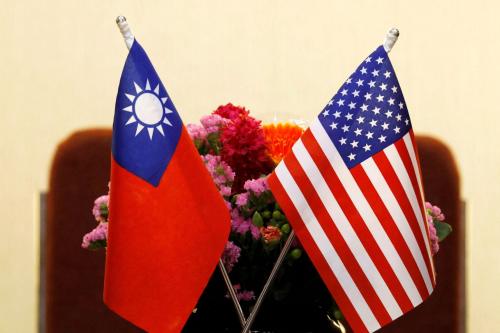Europe’s military spending is in free fall. As highlighted during a seminar organised by the CER in December as part of the FR-UK Defence Forum, the EU countries combined have reduced defence spending from €200 to €170 billion since the start of the economic crisis in 2008. In response, governments have signed up to a variety of new bilateral and multilateral initiatives. These are designed to limit the impact of budget cuts on their armed forces. But so far, the savings incurred pale in comparison. At the December discussions, participants estimated them at €200 to €300 million. Many sensitivities relating to national security make it hard for governments to implement collaborative defence efforts. But at a time when Europe’s neighbourhood is replete with instability and the United States is scaling back its own armed forces, Europeans need to do more to stem the damage to their militaries.
Notwithstanding their budget cuts, taken together EU states are still the second largest defence spenders in the world. And not all European countries are reducing the level of funding to their armed forces. According to a 2011 study for the European Parliament, Finland and Denmark have maintained military spending steady in recent years. Poland and Sweden have increased it.
But even prior to the economic crisis, most European countries spent less than 2 per cent of their GDP on defence – even though NATO members are in theory committed to devote at least that much to their militaries. And, according to the European Parliament study, most middle-sized European countries have cut their defence spending by 10 to 15 per cent since 2009. Some of the smaller EU states, including Latvia and Lithuania, have cut by more than 20 per cent. Britain is reducing its military budget by 7.5 per cent over four years. And according to Andrew Dorman from Chatham House, the actual reduction is nearly 25 per cent because the ministry of defence has many unfunded liabilities and has to unexpectedly pay for the replacement of the UK’s nuclear deterrent. France is expected to scale back its military once it announces its new defence priorities this year. As a result, US officials warn that Europeans will soon be incapable of deploying a mission like the one they sent to Libya in 2011.
European governments have acknowledged that closer co-operation between their armed forces could offset – at least partly – the impact of such large spending cuts. They have introduced some welcome measures. For example, last year, 14 countries agreed to buy surveillance drones for a joint NATO-run squadron. Eighteen states now take part in an EU network to facilitate maritime surveillance through information exchanges. Last April, Belgium and the Netherlands decided to co-operate in helicopter maintenance. In September, Bulgaria and Romania agreed terms to make it easier to police each other’s airspace. Britain and France are training together to develop a new joint expeditionary force. And the UK and other Europeans are providing logistical support to France’s deployment in Mali.
But governments remain wary of pooling military capabilities. They still fear that their partners may block their access to shared equipment if they disapprove of a particular operation. States also disagree on the best way to develop new military technologies. For example, the UK wants to acquire defence equipment with France bilaterally. But since President François Hollande has been in office, France has become increasingly keen to allow other European countries to take part in Franco-British procurement projects. Many countries are averse to committing to ambitious initiatives because they know that these can be costly in the short term – last year Britain notably abandoned its plans to adapt its aircraft carrier so that French planes could land on it, after realising how expensive the adjustments would be. Several EU states are loath to integrate their defence companies with those of other countries, as Germany illustrated when it refused to support the merger between BAE and EADS. Finally, governments do not want their defence firms to lose out on contracts. Many in France worry that several of the cost-saving projects proposed by NATO, including missile defence and the joint purchases of surveillance drones, favour US defence companies.
Europeans need to overcome some of these continued aversions to co-operation. Even though governments would prefer to avoid using military force, they might not have a choice. Several conflicts risk undermining stability in Europe’s southern periphery over the next few years – not least the partial take-over of Mali by Islamist militants, where French forces have already felt compelled to intervene, the civil war in Syria and a possible standoff with Iran. And Washington, struggling with its own budgetary constraints, wants its allies across the world to take more responsibility for their regional security.
President Hollande’s government can allay some of the French concerns about the lack of European industrial participation within NATO cost-saving initiatives. To do so, Paris could suggest projects to the alliance which involve equipment made in Europe. As a participant from the CER seminar has proposed, Berlin, London, Paris or Rome could sell some of their old fighter jets to countries in Central Europe which want to strengthen their arsenals cheaply.
As suggested by another participant at the December discussions, Europeans should buy cutting edge military capabilities only when it is necessary. Over the last few decades, the cost of defence equipment has grown exponentially. Even when their economies are stronger, European governments will increasingly struggle to arm their militaries. In some cases, national security will require governments to continue acquiring the most technologically sophisticated capabilities. But for less sensitive tasks, governments should explore cheaper equipment options and a greater use of civilian suppliers, for example in communications.
Finally, European governments must ensure that they do not duplicate their efforts to build the next generation of drones. European governments have long argued that it has been very inefficient for Europe to have three manned fighter jets programmes (Rafale, Eurofighter and Gripen). The duplication has prevented the various programs from benefiting from economies of scale, it has curtailed interoperability amongst European armed forces, and it has led Europeans to compete against each other in export markets.
Over the next few years, Europeans will decide how to develop unmanned combat aircraft and other sophisticated drones. It is still unclear how governments will proceed. France and Britain have announced plans to develop next generation drones bilaterally. EADS and Finmeccanica, Italy’s largest defence company, have floated intentions to do the same. And France has agreed to work on unmanned aircraft with Germany, too.
Under current spending trends, there is insufficient demand in Europe to support several competitive next generation large unmanned aircraft programmes. So Europeans must avoid several unco-ordinated efforts taking place simultaneously. EU countries could barely afford duplicating expensive aerospace programmes prior to the economic crisis. They definitely cannot afford it now.
The Brookings Institution is committed to quality, independence, and impact.
We are supported by a diverse array of funders. In line with our values and policies, each Brookings publication represents the sole views of its author(s).



Commentary
Op-edTime to Bite the Bullet on European Defence
February 1, 2013